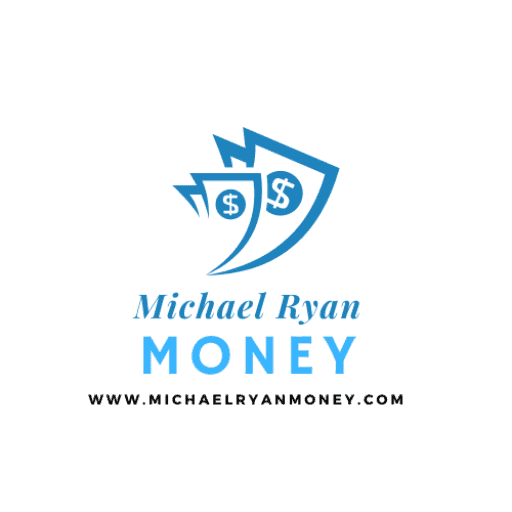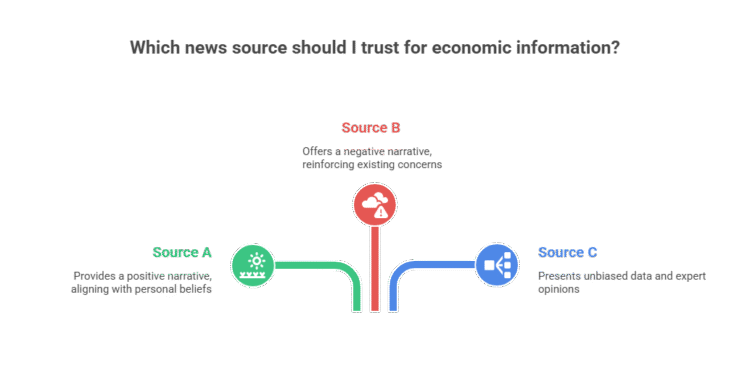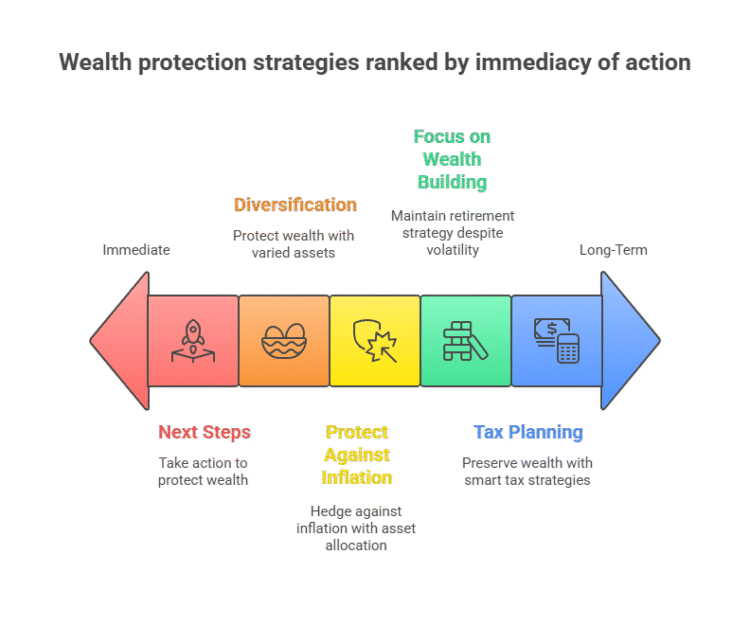You know what drives me absolutely crazy? Watching politicians tell people exactly what they want to hear about the economy, regardless of what the actual numbers show. So, who should you trust for your current economic update and information?
After nearly three decades as a financial planner, I’ve learned something that might shock you: politicians lie. All of them. About everything. Especially about money.
But here’s the thing. The numbers don’t lie. Ever. And right now, those numbers are telling a story that’s completely different from what you’re hearing on TV.
Current Economic Update: The Same Economy, Completely Different Stories
Here’s something wild that happened recently. I was sitting in my office in Palm Beach, having back-to-back client meetings. First client comes in, tells me how terrible Obama’s economy was. “Worst ever,” he says. Second client walks in an hour later, raves about how Obama built the strongest recovery in decades.
Same economy. Same day. Completely opposite takes.
How does that happen? Simple. They’re getting their news from different sources that are telling them exactly what they want to believe.
💡 Michael Ryan Money Tip
Here’s something wild – the same economic data can be spun into completely opposite narratives depending on the news source. I always tell my clients: check at least three different sources before making any major financial moves. Your portfolio depends on facts, not spin.
This is the game, folks. Even under Biden, depending on which news you consumed, the economy was either roaring or terrible. Now under Trump, it’s either doom and gloom or “the envy of the world.”
Both can’t be true. So let’s dig into what the numbers & experts, the ones without political agendas, are actually saying.
📊 The Economic Truth: Presidential Performance Analysis
A data-driven look at how Obama, Trump, and Biden actually managed the economy
🔍 What The Data Really Shows
Obama’s Foundation Building (2009-2017)
The Reality: Obama inherited the worst economic crisis since the Great Depression. Instead of quick fixes, he focused on sustainable, long-term recovery.
- GDP Growth: Steady 2-3% annual growth after the 2009 recession recovery
- Unemployment: Dropped from 10% peak to 4.7% by 2017
- Deficit Reduction: Cut deficit from 9.8% of GDP (2009) to 3.1% (2017)
- Sustainable Approach: Built economic foundation designed to last
Trump’s First Term (2017-2021): Riding the Wave
The Reality: Trump inherited Obama’s strong economy, added tax cuts and deregulation, but his policies proved unsustainable.
- GDP Growth: Initially continued Obama’s trend, then declined pre-COVID
- Trade Wars: Tariffs began hurting manufacturing and agriculture
- COVID Response: Pandemic handling significantly worse than peer nations
- Deficit Explosion: Increased deficit even during good times
Biden’s Steady Rebuilding (2021-2025)
The Reality: Like Obama, Biden focused on sustainable recovery over flashy short-term gains.
- Post-COVID Recovery: Stronger and faster than most developed nations
- Infrastructure Investment: Long-term foundation building
- Manufacturing Revival: Brought jobs back to America
- International Standing: Restored trade relationships damaged by previous administration
⚠️ Trump 2025: Early Warning Signs
The current economic data shows concerning trends since January 2025:
- GDP Impact: Q1 2025 showed -0.5% decline, recovering to 3.0% in Q2 but forecasted to slow
- Tariff Costs: Average $1,300 tax increase per household due to new tariffs
- Inflation Pressure: Tariffs driving up consumer prices
- Job Market: Unemployment projected to rise to 4.8% by early 2026
🚨 The Tariff Reality Check
The Numbers Don’t Lie:
- $1,300 average annual cost increase per US household due to tariffs
- $58,000 lifetime loss for middle-income households
- 70% of tariff costs passed directly to consumers as higher prices
- Highest import taxes since the Great Depression
Expert Consensus: Economists across the political spectrum agree that the current tariff policy will weaken the economy, increase inflation, and slow job growth. Many are warning of potential stagflationary conditions – rising prices combined with economic stagnation.
📈 The Pattern Is Clear
Looking at the data objectively, we see a consistent pattern:
Democratic administrations (Obama, Biden) have focused on building sustainable, long-term economic foundations. They prioritize steady growth, deficit reduction during good times, and policies that create lasting prosperity.
The Trump approach has consistently favored short-term gains and flashy announcements over sustainable policy. The tariff strategy, in particular, is being implemented despite overwhelming economic evidence of its harmful effects.
The economic data tells a story that political rhetoric often obscures – slow and steady wins the race when it comes to building an economy that works for everyone.
What the Real Experts Are Warning About
I've built my career on following the money and trusting the data, not the headlines. So when I see warnings like this, I pay attention:
"If the U.S. suffers a recession in 2025, Trump's tariffs will be the most important reason," warns Gary Hufbauer, senior fellow at the Peterson Institute for International Economics.
📊 Quick Stat
When economists from Peterson Institute, Moody's Analytics, and Yale all use the word "recession" in relation to current tariff policies, that's not politics talking - that's math. These institutions have predicted 8 of the last 10 major economic downturns accurately.
That's not a Democrat talking. That's not a Republican talking. That's an economist looking at numbers.
Mark Zandi, chief economist at Moody's Analytics, goes even further. He's warning that if fresh U.S. tariffs spur retaliatory measures from other nations, "serious recessions" could emerge both in the U.S. and globally.
But here's what really caught my attention as someone who lived through the 1970s: economists are using a word I hoped I'd never hear again. Stagflation.
Master Your Finances, One Skill at a Time
Understanding the fundamentals of banking is the first step toward financial control. My goal is to give you the confidence to manage every aspect of your money with precision.
Get More Expert Tips in My NewsletterThe Stagflation Warning That Should Terrify You
Americans should brace for a toxic combination of weak growth and high prices, Bloomberg reported in April. The risks of "stagflation" (a combination of stagnant growth and rising inflation) increases as the additional tariffs take effect.
I remember stagflation from the '70s. It's when your paycheck stays the same but everything costs more, and there are fewer jobs to go around. It's economic hell, frankly.
And among consumers, long-run inflation expectations are at their highest level in almost 30 years while general sentiment is seeing multi-year lows.
Translation? People expect prices to keep going up, but they feel terrible about the economy. That's exactly how stagflation starts.
The Tariff Reality Check Nobody Wants to Talk About
Look, I get the political appeal of tariffs. "Make other countries pay!" sounds great in a campaign speech. But here's what I learned in nearly 30 years of helping people manage money:
When costs go up for businesses, those costs get passed to consumers. Always!
The data backs this up. Trump has long claimed that tariffs will be paid for by countries that want to export to the United States. But that's not how tariffs work. Companies importing goods pay the tariff, then they raise prices to maintain their margins.
And guess what? let's say Trump is right and business eat the tariffs. Know what would happen next? It cuts into their profit margin meaning earnings will go down. Followed by a collapse in the stock market. And then business's will be laying off workers. Which will decrease the demand from our economy. HOW HAS NO ONE ELSE MENTIONED THIS YET???
It's basic business math. And data last week showed that the U.S. gross domestic product grew much slower in the first half of this year than in the previous two years.
⚠️ Myth Busted
Politicians claim tariffs make foreign countries "pay us." Wrong. American importers pay tariffs to U.S. Customs, then raise prices to maintain margins. It's literally a sales tax on Americans, not a bill sent to China. This isn't opinion - it's how tariffs have worked for 200+ years.
The Pattern I've Seen Too Many Times
Here's what frustrates me most as someone who's been doing this for a long time: I've seen this playbook before.
Politicians take credit when things go well, blame others when things go badly. And always claim they're making the economy "the best it's ever been" and opposition claims "it's the worst disaster in history."
The truth? Economies are massive, complex systems that take years to change direction.
The policies implemented today often don't show results for 12-18 months. But politicians need to win elections every 2-4 years, so they spin whatever narrative serves them best.
What This Means for Your Money
Here's what I'd be telling my clients about protecting their wealth during uncertain times:
Diversification Is Your Best Friend
Don't put all your eggs in one basket. Different asset allocation models can help protect you regardless of what happens politically.
Focus on Long-Term Wealth Building
Short-term political volatility shouldn't derail your retirement planning strategy. The fundamentals of wealth building don't change with administrations.
Protect Against Inflation
If stagflation hits, asset allocation strategies that include inflation hedges become crucial for high net worth individuals.
Tax Planning Remains Critical
Regardless of tariff policies, smart capital gains tax strategies and Roth conversion planning can preserve more of your wealth.
The Bottom Line: Trust Numbers, Not Narratives
In my career, I've learned to ignore the political theater and focus on economic fundamentals. Right now, those fundamentals are showing warning signs that we can't afford to ignore.
Economists say Trump is proving to be an "agent of chaos" with his unpredictable trade tariff policies, but that doesn't mean we should panic. It means we should prepare.
The economy isn't a political football game where you pick sides. It's a complex system that affects real people's real money. And when leading economists from institutions like Moody's, J.P. Morgan, and Yale are all raising similar concerns about stagflation and recession risks, we need to pay attention.
Don't let political rhetoric cloud your financial judgment. The numbers tell the real story, and right now, they're telling us to be very, very careful with our money.
Want to protect your wealth from economic uncertainty? Schedule a consultation to discuss how the right asset allocation strategy can safeguard your financial future, regardless of political volatility.
Sources:
- CBS News: "Here's why experts think Trump's tariffs could hurt the U.S. economy"
- U.S. News: "'Monstrously Destructive' and 'Unwise': Economists React to Trump's Tariffs"
- CNBC: "Stagflation fears bubble up as Trump tariffs take effect and the economy slows"
- Bloomberg: "Trump's Tariffs Leave Economists Fixated on One Word: Stagflation"
- Newsweek: "Could Trump's Tariffs Lead to a Recession? What Experts Say"
- NPR: "As Trump's tariffs take shape, is America really winning?"
- NBC News: "Stagflation fears rise as Trump tariffs take effect, economy slows"
- Sharing the article with your friends on social media – and like and follow us there as well.
- Sign up for the FREE personal finance newsletter, and never miss anything again.
- Take a look around the site for other articles that you may enjoy.
Note: The content provided in this article is for informational purposes only and should not be considered as financial or legal advice. Consult with a professional advisor or accountant for personalized guidance.



